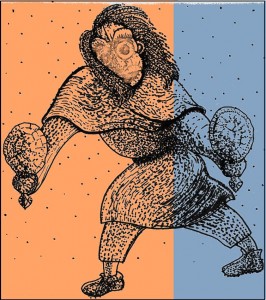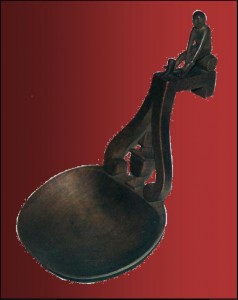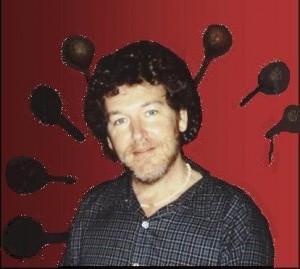 The masks of the Iroquois False Face Society and Corn Husk Society are a touchy subject for the Iroquois — and for me as well. Technically speaking, the Iroquois prefer that we do not even talk about them, let alone depict them in drawings or photographs, and certainly, unless connected to the societies, refrain from making, possessing, or selling them. This is understandable, since the masks are considered living beings and the attached rituals are part of a living process within Iroquois culture.
The masks of the Iroquois False Face Society and Corn Husk Society are a touchy subject for the Iroquois — and for me as well. Technically speaking, the Iroquois prefer that we do not even talk about them, let alone depict them in drawings or photographs, and certainly, unless connected to the societies, refrain from making, possessing, or selling them. This is understandable, since the masks are considered living beings and the attached rituals are part of a living process within Iroquois culture.
However, the BARBARA REILLY story – complete with masks — presented itself to me and bade me tell it. That makes me involved. In this new article I say something about them, after struggling with what that something should be.
 BARBARA REILLY is a middle grade Historical Fantasy novel whose main character is a white girl in 1948, but the story also portrays a difficult period for the Iroquois Six Nations much earlier, during the Revolutionary War. The book’s magical elements connect the people of that time to Barbara, a farm girl who makes firsthand contact with the past.
BARBARA REILLY is a middle grade Historical Fantasy novel whose main character is a white girl in 1948, but the story also portrays a difficult period for the Iroquois Six Nations much earlier, during the Revolutionary War. The book’s magical elements connect the people of that time to Barbara, a farm girl who makes firsthand contact with the past.
Masks of the Iroquois False Face Society and Corn Husk Society figure prominently in the story.
 The Iroquois rightfully discourage any display of masks, or ownership outside of the medicine societies. They object to even there being any discussion of them, reason being that the masks’ functions are the sole proprietorship of the societies (and how would we, not part of that group, understand those functions?).
The Iroquois rightfully discourage any display of masks, or ownership outside of the medicine societies. They object to even there being any discussion of them, reason being that the masks’ functions are the sole proprietorship of the societies (and how would we, not part of that group, understand those functions?).
And yet the masks appear in the book. And I speak of them here in this article.
Am I being disrespectful? Perhaps. I will leave that for others to decide. For myself I believe I was moved by Spirit to include the sacred masks in the story. The story has spiritual underpinnings. I treat the subject with respect. Perhaps this article as well as the book can call attention to the respect with which everyone should regard the Faces. Even as it broaches the forbidden subject.
 I do not pretend to know deeply about the masks, although Leon Shenandoah, the late Tadadaho of the Six Nations, himself told me a few things. Bear in mind, I do not take his words to me as license to speak. But speak I will, if only as a mouse in the wall.
I do not pretend to know deeply about the masks, although Leon Shenandoah, the late Tadadaho of the Six Nations, himself told me a few things. Bear in mind, I do not take his words to me as license to speak. But speak I will, if only as a mouse in the wall.
 The Faces are for healing. They contain power. The maker must prepare himself. The mask is carved from a living tree. One common design depicts a legendary figure called Broken Nose. Another shows lips in the act of blowing on coals. There are others. The masks are fearful. They are awe-inducing. They come out on special occasions only. The wooden ones are treated with oils and corn mush.
The Faces are for healing. They contain power. The maker must prepare himself. The mask is carved from a living tree. One common design depicts a legendary figure called Broken Nose. Another shows lips in the act of blowing on coals. There are others. The masks are fearful. They are awe-inducing. They come out on special occasions only. The wooden ones are treated with oils and corn mush.
 When I started writing Barbara Reilly, I had already great respect for the Iroquois. I lived on former Cayuga land (one of the Six Nations) at the time. I considered it still Cayuga land. I was inspired to visit Onondaga Nation, where part of the book takes place. I was privileged to meet with Leon Shenandoah, to discuss what I was writing. Not long after and closer to home, I met a Delaware medicine man and began participating in ceremonies with his group.
When I started writing Barbara Reilly, I had already great respect for the Iroquois. I lived on former Cayuga land (one of the Six Nations) at the time. I considered it still Cayuga land. I was inspired to visit Onondaga Nation, where part of the book takes place. I was privileged to meet with Leon Shenandoah, to discuss what I was writing. Not long after and closer to home, I met a Delaware medicine man and began participating in ceremonies with his group.
The book continued to take shape from my personal relationship with Native culture, as well as through research and other channels.
 One research trip took me to New York City, to photograph Iroquois artifacts at the Museum of Natural History. I remember well the thrill of seeing life-sized figures in vintage clothing, and snapping pictures of baskets and weapons and implements of all types from long ago. Then I came around a corner to find an entire case of False Face and Corn Husk masks.
One research trip took me to New York City, to photograph Iroquois artifacts at the Museum of Natural History. I remember well the thrill of seeing life-sized figures in vintage clothing, and snapping pictures of baskets and weapons and implements of all types from long ago. Then I came around a corner to find an entire case of False Face and Corn Husk masks.
I clicked and clicked until my roll was used up – 36 pictures – in a very short time.
I was with family and as we left the museum, I remember running into friends we hadn’t seen in years. During the short and joyful meeting, I wished I’d had a couple of shots left so I could have photographed this chance reunion. It was then I realized that somehow I had failed to load the camera. The camera was one that showed numbers with or without film. There was no time to go back. I felt the burn of not getting what I had come for. But I appreciated the irony. It was as though the masks didn’t want to be filmed.
A few years later, perhaps 1995, well after I had completed my first draft of the book (and before I had begun rewrites and editing — a saga – see my previous article!), I had occasion again to travel to New York. I was determined to try again, to at least get some pictures of artifacts – since so many appear in my story. And even to get some mask shots, if for my descriptions only.
 I was visiting my dad, and we went to the museum together. He took the picture of me shown here (this time I made sure there was film in the camera). The artifacts were all there, But now the case in which the masks had hung was empty. A sign informed us that they had all been returned to the Iroquois.
I was visiting my dad, and we went to the museum together. He took the picture of me shown here (this time I made sure there was film in the camera). The artifacts were all there, But now the case in which the masks had hung was empty. A sign informed us that they had all been returned to the Iroquois.
I had to smile.
Even after that – years again later, while preparing the book for publication in 2012 – I briefly considered incorporating a False Face into my book cover design. Why? Because its context within the story contains some of the most exciting parts of the book – and isn’t that supposed to be what one uses, in smart marketing? Yes, but I knew I couldn’t do that.
 The pen-and-ink drawings you see here were not part of that fleeting design notion. Rather they were inspired during the first draft writing, and set down independently to express part of my vision for the book. I share them here (with features whitened out) to imbue the reader of the article with a taste of what the masks mean to me.
The pen-and-ink drawings you see here were not part of that fleeting design notion. Rather they were inspired during the first draft writing, and set down independently to express part of my vision for the book. I share them here (with features whitened out) to imbue the reader of the article with a taste of what the masks mean to me.
My apologies to the Iroquois for interpreting their rituals at all. The masks are living. The book however is living also. With the utmost respect I join rather than presume to speak for the upholders of Spirit and the efforts of those of the past, present, and future to keep the ways alive.
Nya-whey.
This is the third in a series of articles exploring The World of BARBARA REILLY.
Images & Text Copyright 2013 Carl Grimsman, All rights reserved.

